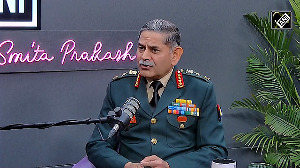All three bikes offer superlative performance and are bang for the buck in every sense, offering something different and appealing to everyone, says Indian motoring website MotorBeam.com.
The affordable performance motorcycle segment was kick-started a little over half a decade back by three Indian manufacturers that offered powerful motorcycles at relatively lesser value. Over the years, not only have these bikes been bestsellers for their respective companies but also formed a cult following among the enthusiasts as well. Yea! We are talking about the Bajaj Pulsar 220, Hero Karizma R and the TVS Apache RTR 180 with all three bikes offering something very different at a similar price point.
With the Karizma refreshed recently, we pit the three performance bikes against each other to see if they still feel relevant despite the newer competition.

Much like wine, the Bajaj Pulsar 220 has aged very well with its muscular frame, sporty stance and the half-fairing with projector headlamps that still manages to grab attention more often than you would think. In comparison, the new Hero Karizma R has taken things for the worse in terms of styling.
You will either love it or hate it, but one thing is for sure you can't strike a balance between the two. The bike gets a slender profile with the vertically stacked projectors and LED DRLs while the rear gets a sharp profile. Coming to the TVS Apache RTR 180, the bike looks puny in contrast to the other two but gets angel lights integrated in the front headlight that definitely adds to its appeal over rivals.
The Apache also has a more purposeful stance, which makes it a sporty bike minus the look-at-me factor.

All the bikes get the LED tail light as standard while the illumination is low on the Karizma and Apache even when not compared to the Pulsar. In terms of instrumentation, Hero has carried the dated analog console with a digital display on the new Karizma and is the most mundane unit here.
It does get updated with a side-stand indicator though, which is absent on the Apache and Pulsar.
The Pulsar 220 and the Apache 180 also get an analog-digital unit that look sporty and are equipped with two trip meters, battery warning among the regular tell-tale lights. None of the bikes get solitary turn indicators.
The Apache though, gets a service due indicator and a 0-60 km/hr timing recorder that is a really cool feature. In terms of switchgear, the Apache gets excellent quality switches on offer followed by the ones on the Pulsar while the Karizma gets dated switches and misses out on an engine kill switch.

The Bajaj Pulsar and Hero Karizma have a low seat height that makes them ergonomically viable for riders of all sizes; whereas the TVS Apache RTR despite the improvement is best reserved for riders of short or medium height and feels uncomfortable for tall riders. The riding position is comfortable on all three, but it is the Apache that gets a sharp riding posture over the other two.
All three bikes offer ample cushioning and the generous length and width makes them comfortable on long journeys as well. The rear view mirrors are too small on the Pulsar 220 and are frankly useless, whereas the mirrors on the Hero and TVS have been positioned well.
Lastly, the foot pegs are rear set on all bikes but it is the Pulsar and Karizma that allow room to move around, something that's missing on the Apache.

The USP of these bikes is performance and we will allow the numbers to do the talking. 0-100 km/hr comes up in 11.2 seconds on the Pulsar 220 while the same run is achievable in 13.2 seconds on the Apache RTR 180.
The Karizma slips right in the middle completing the run in 11.59 seconds and is way faster than the older model. In terms of top-end performance though, the Pulsar 220 takes the trophy home clocking a top speed of 134 km/hr while the Karizma is a distant second at 126 km/hr and the Apache RTR a close third at 125 km/hr (as per our VBOX tests). All the bikes offer excellent mid-range performance.

While the Hero Karizma is the recently updated bike here, the changes haven't been extended to the mechanicals and the bike gets good low and mid-end torque but loses out on the top-end grunt. The engine though is smooth and refined but does come with vibrations. The issue is the same with the Apache as well which gets a rev-friendly motor but also has ample vibrations. Nonetheless, the strong mid-range and top-end coupled with an appealing exhaust note and precise gearing makes the bike a pocket rocket. The Pulsar has a short first gear that makes it tricky to get off the line but there is no stopping this brute from there on clocking the highest speed once you get the hang of it. The bike also gets a high-lift camshaft and top-end power biased powerband.

The riding dynamics on the Apache and Pulsar are quite similar as they use the same type chassis underneath. The Apache, however, gets a more stiffened setting and does not wobble like the 220. All the bikes get a dual shock suspension setup at the rear, but here too the Apache is miles ahead of its rivals offering the most cornering fun. The short wheelbase, lightweight and feedback friendly turn-in makes the TVS at home around the twisties.
Bajaj has been constantly working on the Pulsar and in its latest iteration, the bike gets reworked front forks, reworked rear springs with an overall lowered ride height than the original 220. The Karizma R in its current setting is corner-friendly and changing directions is extremely easy while leaning into the corners is confidence inspiring. However, the Hero does feel slightly hairy at high speeds due to its softer suspension setup, a problem also seen on the Apache due to the rear-biased weight on both the bikes.

Undoubtedly, the braking performance on the TVS Apache RTR 180 is the best courtesy of the dual-channel ABS system; meanwhile the Bajaj Pulsar 220 comes in second with top-notch braking performance and offers excellent feedback. The Karizma offers adequate stopping power but is the most dated here with rear drum brakes, while the other two bikes come with discs as standard. The fuel economy figures on all three bikes are appreciable with the 220 returning 35.3 km/l whereas the Karizma returns a similar 32.2 km/l. The Apache is the most pocket-friendly bike here with a fuel efficiency figure of 38 km/l.

Despite the questionable styling on the new Hero Karizma R, the bike gets a host of upgrades and brings the performance quotient neck-and-neck with the Bajaj Pulsar 220. The latter though has constantly witnessed improvements and also posts the best performance numbers for the day. Both the bikes are evenly priced and the Karizma just manages to offer a tad bit more reliability over the Pulsar. Coming to the TVS Apache RTR 180, the bike still remains the most affordable two-wheeler to get ABS and builds a strong case for itself as an extremely fun to ride package. However, if you want an affordable performance motorcycle that covers your commuting hassles as well as weekend fun, the Pulsar 220 is the more apt choice in this shootout and is something one can live with everyday.











 © 2025
© 2025